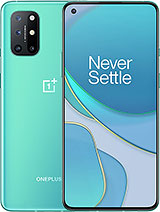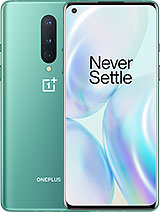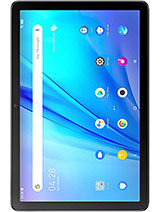Why Samsung is losing to Xiaomi. By Mrwhosetheboss
Samsung is in trouble, their last flagship phones, the galaxy s21 series. They only sold 13.5 million units after six months. Compare that to the 20 million they sold this time last year. The 37 million this time the year before or the almost 100 million iPhone 12 the apple sold in the same time frame, and it becomes pretty clear that Samsung is losing its grip. They've been overtaken in key markets around the world. Their leader is in jail for bribery, and the company has apparently just entered a management crisis where the entire mobile division is being reviewed to find out what's wrong.
But what is wrong? It's not like Samsung suddenly started making rubbish phones, their s21 flagships are better and cheaper than last year's phones. Their foldable phones are market, leading it's not obvious. Looking at the company's output that Samsung mobile is struggling, the answer, or at least a big part of the answer, is Xiaomi. These are the five fascinating reasons. Why, and thanks to fuel for sponsoring this video right just to get you up to speed, Xiaomi started in 2010 that's just 11 years ago, but even then by 2014 they'd, overtaken Samsung in China by 2018, they'd, beaten them in India, and just now in 2021, they've knocked them off the top spot globally.
That's ridiculous! That doesn't even make any sense how well one key advantage that Xiaomi has because of how late they started. Is that they've been built around being a digital first company and that's allowed them to just be more efficient, while Samsung used to sell in only brick and mortar stores, and they're now trying to straddle this with online channels too. Every aspect of Xiaomi strategy from their marketing to their production lines are built with online in mind. They use things like flash sales and fan events to capitalize on free media, as opposed to opting for traditional but expensive billboards and TV efforts, they've, basically structured themselves to avoid the extra costs and the bureaucracy that come with having larger offline companies, for example, they don't have meetings for the sake of having meetings. They only have physical stores when they want to focus on products that actually need a physical demonstration, but, most importantly, because of all this they've managed to massively streamline their staff.
Let me be very clear here: this company has managed to exceed Samsung in sales, with only seven percent of the number of full-time employees. Twenty thousand versus three hundred thousand okay, congratulations to them, but where this starts impacting Samsung is that these cost savings combined with Xiaomi's relative disregard of high profit margins means that they choose to make their phones cheaper. I distinctly remember when I first started: testing Xiaomi phones. I was a literal baby back then, but even then, by this point I tested a lot of cheap Chinese phones. You had Cabot and humidity and united, etc.
, and while I was always impressed by the price to performance ratio of those phones, Xiaomi was different. I hadn't really heard of them at the time, but I just remember being completely in awe of how they were just as affordable as these cheap Chinese phones, but at the same time they had the premium hardware and software of phones that people in the UK were spending twice as much money on just for fun. I would actually go and hand the original Xiaomi Redmi Note to my friends and just ask them to guess how much I paid for it, admittedly, not the typical definition of fun. But the point is nobody even thought to guess close to how much it actually was now. Don't get me wrong for their low end.
Phones, Xiaomi does use every trick in the book to get the price to where it is they use ads in the software they use bloatware, they use early bird pricing. I don't love these practices and, of course, it's going to feel abhorrent stepping down to that from a thousand dollar flagship. But the thing that I do have to hand to Xiaomi is that, unlike other enthusiast brands, they've stayed in the same lane, they're still out here in 2021 cramming. Every possible spec into 200 phones, and I think that as a budget conscious, consumer there are few companies who give you better value and if there's any doubt about this, all you have to do is look at the resale market unless something is particularly limited in stock. The resale market is a very good gauge of how much value a product actually provides when you strip away all the brand power and marketing and if you've ever tried to sell a Samsung phone, you might well have been left with a bitter taste in the mouth when you realize just how much value you've lost.
Just, for example, let's take the Samsung Galaxy a52 and the Xiaomi Redmi Note 10 pro both 2021 phones, but the Samsung was launched at 400 pounds Xiaomi at 270. , but now a quick search one bay finds these two devices selling for almost exactly the same amount. Okay, you might be thinking wait. A second Xiaomi does make expensive phones, they've got that me 11 ultra and that me mix fold which are basically the same prices as Samsung's counterparts, and you'd be right, but the way that Xiaomi's managed to have those while still serving insane value in the budget and mid-range segments is through sub-brands see. The issue that you can tell Samsung has is that it's fighting against itself.
Some part of Samsung is aware that if they make their mid-range phones too good, then they're going to be so similar to their flagship phones that they're just going to cannibalize their own sales, so Samsung's phones at 400 or below are honestly just not competitive, but by using sub brands like Poco and Redmi. Xiaomi is still able to target these more budget, conscious segments they're still able to go all out and actually make these as feature and as spec rich as they want to, but still keep enough differentiation such that there's still room for their luxury me flagship phones, sub brands are what allow Xiaomi to sell a near flagship for 400 and then an actual flagship for 1200, without looking like they're being inconsistent or contradictory, whereas it might well be an issue for Samsung, it's not a revolutionary idea that better value is generally more appealing for customers, but a few things have happened recently, which have quite quickly made this value more important than ever. For starters, coronavirus, many people haven't been able to work many people having to take time off to look after themselves or others. I've seen all sorts of small businesses collapsing around me and in financially difficult times, companies that focus on high price to performance ratios are the ones that succeed, but on top of this being stuck at home, people have very quickly transitioned to online shopping, and it's like the stars of a line for Xiaomi because remember they are built around being digital first see when an average consumer is buying a phone online they're, looking at very different things to when they're buying a phone in a store, it's much less about how it feels in the hand and the perceived quality from how spaced out your products are it's much more about the measurable specs of the phone compared to others? Does this have more battery capacity than a Samsung? Does it have a higher refresh rate than an iPhone? And in this arena where all the info is right there in front of you on a sheet? Xiaomi's phones just make sense. This is what they're built for its something I hear a lot of here in the UK.
Aside from complaints about the weather is that I can either get an apple or I can get a samsung has such a strong brand that there's a lot of people who don't even realize that there are other android phones, but the more we move to online shopping. The more. I think that consumers are going to start to be informed. The more reviews, they'll read the more tech videos, they'll watch, the more they'll be able to put aside any preconceptions they have about brands and just buy whatever the best value product is. Every company makes good stuff and bad stuff, and the internet allows people to very quickly pick the best products from each one.
So providing Xiaomi keeps making good products the fact that their brand name is less popular, I think, is going to matter. Less and less I mean just look at the most subscribed tech YouTube channels now versus 10 years ago. That's millions upon millions of people who might have previously thought. Oh, my past phone was a Samsung I'll just get another Samsung. Who might now think? Actually what? If I consider an Oppo or a VIVO or a Xiaomi, we've had a few one-on-ones about the collapse of Huawei, and how there were two primary contenders who could potentially fill the void that they left behind? I expected Samsung to be the ones to do it, given that they're the only Indo-Chinese major player and that the US's distrust of china is what caused Huawei's collapse, but actually it was Xiaomi.
This focus on value at a time when people really needed it. This readiness for the switch to online purchasing, as well as how they've kept their team, small and agile, meant that as soon as the opportunity came and Huawei started, retreating Xiaomi was sprinting before Samsung even started, walking scooping up all these extra customers as they went. But you want to know what links all of this together in a way Xiaomi secret weapon. To put it bluntly, Xiaomi has its fingers in a lot of pies, let's go with it, and if you are enjoying this video, then a sub to the channel would be meaty like Samsung makes phones, TVs, watches, yes, Xiaomi makes those too, but also everything from shavers to scooters, to flower monitors, literally hundreds of ecosystem products across every possible category, and they've built each of them. As a hook, see Xiaomi makes sure that these are good products in their own right.
They actually tried to make each one the best value option within that category and the reason they're often able to do this is because, unlike a lot of the companies that they'll be up against in those segments, Xiaomi doesn't need to make profit from them because all they serve, as is entry points into the Xiaomi ecosystem. They've managed to create this enormous selection of genuinely high quality gadgets, all with a consistent aesthetic that reinforces you're using a Xiaomi product, and it makes you want to get more Xiaomi products all with a surprisingly affordable price. I'm guilty too, on the rare occasion that I leave the house on a scooter. I use a Xiaomi scooter if I want to hoover my downstairs floors, I use a Xiaomi vacuum cleaner and so, when looking for future household gadgets, some part of me naturally would prefer it to be Xiaomi branded. Instead of I don't know a melee or a Phillips, it's not like Samsung, isn't trying their phones work seamlessly with their TVs and their monitors.
They're, trying to make strategic partnerships with Google and Microsoft to actively keep Xiaomi out they've, even experimented with matching Xiaomi on price by making the ultra affordable galaxy f series of phones, but the facts speak for themselves. Samsung's attachment rate is falling just two years ago, almost 86 of Samsung users said they would also upgrade to a Samsung. Now that number's only 74. I do still think that Samsung has more brand value than Xiaomi. I think we're still at a stage where having the Samsung logo on a product would still add more value to it than having a Xiaomi logo on the same product.
But the point is it's not heading in the right direction for them, in fact, out of all the top five vendors in Europe, they are the only one who's shrinking now in Samsung's defense, they're doing fine in other markets like semiconductors, where competition is less fierce, and they will likely have a surge in phone sales once the data from their newly launched flagship starts rolling in, but also remember that, when it comes to phones, Xiaomi haven't even touched the United States. Yet this company is leading the world without even accessing the richest market. In it, they say that they're waiting for the right product and the right time, others say that they're scared to enter for fear of getting blacklisted like Huawei or potentially getting sued by apple for patent infringement, either way, though the top level summary is that Xiaomi phones are on the way up and Samsung's phones are on the way down and if you're wondering why Samsung's all of a sudden, putting so much emphasis on foldable I'd be willing to bet that this is because it's the only market where they're comfortable that they can beat Xiaomi in. Yes, they could start cutting their prices even more, but this is not a battle. Samsung wants to engage in they've got more to lose than Xiaomi, and they might well lose against a company, that's more efficient and willing to make practically zero profit on their hardware right.
So I've talked about here before how it's a healthy meal made with natural ingredients like oats, coconut peas, in a really convenient form factor, or in other words, a shake that has 26 vitamins and minerals and all the proteins and fiber you could possibly need. Okay. With that in mind, the one thing that I haven't showed yet is the best way to have you. I used to use the shaker and make it myself, but these ready to drink shakes are next level convenient, it's practically an identical ingredients list, but you now have zero washing up to do it's going to be chilled because it's been sitting in your fridge and for some reason, these just taste better. This is gonna sound, a bit odd, but whenever someone comes over one of the first things I do is hand them one of these banana ones and wait for them to tell me how surprised they were bought it so give it a try.
I've dropped a special link which, if you click it'll, help to support my channel and if you order 24 bottles, you also get a fuel t-shirt beautiful. To mention this. If you want to find out about other hot inventions, I've got just the video up here or for why Samsung's latest foldable is really confusing click here my name is Aaron. This is Mr who's, the boss, I'll catch you in the next one. Oh gosh,.
Source : Mrwhosetheboss




























